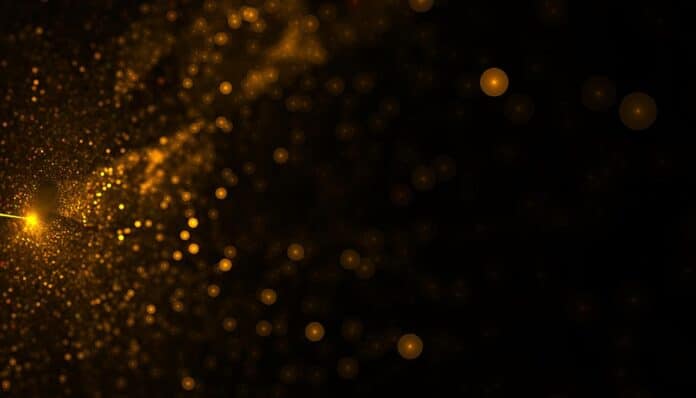All metals glow to some degree; however, how this occurs needs to be better understood. Its microscopic origin is intensely debated, and its potential for unraveling nanoscale carrier dynamics is largely unexploited.
In a new study, EPFL scientists revealed quantum-mechanical effects in the luminescence emanating from thin monocrystalline gold flakes. Specifically, they presented experimental evidence, supported by first-principles simulations, to demonstrate its photoluminescence origin when exciting in the interband regime.
Scientists have created the first thorough model of the quantum-mechanical processes behind photoluminescence in thin gold sheets; this finding could spur the creation of solar fuels and batteries.
Scientists developed very high-quality, skinny gold films between 13 and 113 nanometers for this study. These films allowed them to elucidate this process without the confounding factors of previous experiments.
The team directed laser beams at the films and then examined the resulting faint glow. Their experiment offers surprising and puzzling results. To interpret this data, they collaborated with quantum mechanics specialists from the Barcelona Institute of Science and Technology, the University of Southern Denmark, and the Rensselaer Polytechnic Institute in the United States.
By working together, they could settle the disagreement regarding the kind of luminescence the films were emitting and establish that it was photoluminescence. The way that holes, the opposite of electrons, respond to light determines this luminescence. They also created the first thorough and entirely quantitative model of this phenomenon in gold, which they also developed to be applicable to other metals.
Giulia Tagliabue, head of the Laboratory of Nanoscience for Energy Technologies (LNET) in the School of Engineering, said, “Using a thin film of monocrystalline gold produced with a novel synthesis technique, the team studied the photoluminescence process as they made the metal thinner and thinner. We observed certain quantum mechanical effects emerging in films of up to 40 nanometers, which was unexpected, because normally for a metal, you don’t see such effects until you go well below 10 nm.”
These observations gave crucial spatial information regarding the precise location of the gold’s photoluminescence activity prior to using the metal as a probe. Another unexpected result of the investigation was that the gold’s photoluminescent (Stokes) signal could be utilized to measure the material’s surface temperature, which would be extremely helpful to nanoscale scientists.
Tagliabue says, “For many chemical reactions on the surface of metals, there is a big debate about why and under what conditions these reactions occur. Temperature is a key parameter, but measuring temperature at the nanoscale is extremely difficult because a thermometer can influence your measurement. So, it’s a huge advantage to probe a material using the material itself as the probe.”
Scientists believe their findings will allow metals to be used to obtain unprecedentedly detailed insights into chemical reactions. The LNET’s following research will focus on metals like copper and gold, which can start critical processes like converting carbon dioxide (CO2) back into carbon-based goods like solar fuels, which use chemical bonds to store solar energy.
LNET postdoc Alan Bowman, the study’s first author, said, “To combat climate change, we are going to need technologies to convert CO2 into other useful chemicals.”
“Using metals is one way to do that, but if we don’t understand how these reactions happen on their surfaces, then we can’t optimize them. Luminescence offers a new way to understand what is happening in these metals.”
Journal Reference:
- Bowman, A.R., Rodríguez Echarri, A., Kiani, F. et al. Quantum-mechanical effects in photoluminescence from thin crystalline gold films. Light Sci Appl 13, 91 (2024). DOI: 10.1038/s41377-024-01408-2
